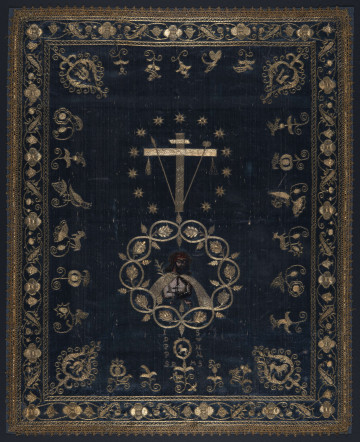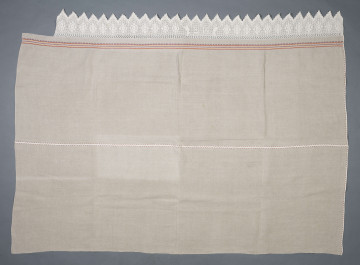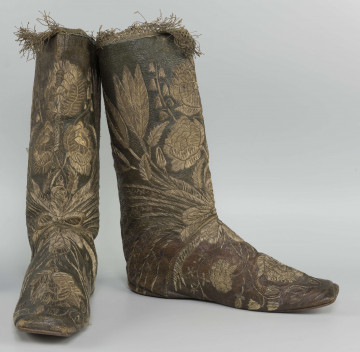
Liturgical fabric
17th/18th century
National Museum in Lublin
Part of the collection: Pyrzycka folk culture
The garter is an unusual element of the folk dress, especially when it is visible. Based on iconography from the first half of the 19th century, mainly paintings, sketches and drawings by August Ludwig Most (1807-1883), it can be seen that at that time, the Pyrzyce women did not expose garters, which were probably already in use at that time. Calf-length skirts and aprons of equal length did not expose anything. However, the costume began to change with time, and in the 1860s-1870s, it reached its apogee of richness and colourfulness. Skirts became extremely voluminous and, simultaneously short, reached down to the knees, which caused garters to be visible, supporting richly embroidered, long socks. Garters were made of velvet, and underneath, for stiffening, they were lined with white linen. The garter preserved in the Museum's collection is made of green velvet and was trimmed all around with a silk ribbon, originally in intense purple. Multicoloured floral embroidery covers its entire surface. A bow made of silk ribbon with yellow floral ornamentation and dark yellow (gold) straps for tying the garter has been preserved. The multitude of colours used in the costume of Pyrzyce, even in such a small element as the garter, may seem gaudy and tasteless, but they all work together to form a multicoloured whole.
Iwona Karwowska
Author / creator
Dimensions
cały obiekt: height: 8 cm, width: 27,5 cm
Object type
folk costume
Creation time / dating
Creation / finding place
Identification number
Location / status

17th/18th century
National Museum in Lublin

1801 — 1900
National Museum in Lublin

1780 — 1800
National Museum in Lublin
DISCOVER this TOPIC
National Museum in Szczecin
DISCOVER this PATH
Educational path